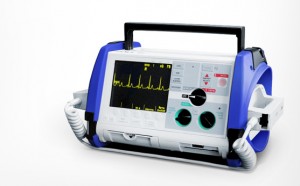The Pacemaker Tax
![Zemlin2 [image]](http://jlpp.org/blogzine/wp-content/uploads/2012/11/Zemlin2-image-557x276.jpeg)
 When the Affordable Care Act (popularly known as “Obamacare”) was signed into law in March 2010, it included a number of taxes on medical-related industries intended to offset the budgetary cost of covering 33 million previously uninsured Americans. Among these new taxes is a 2.3% excise tax on the revenues of medical device manufacturers set to take effect January 1, 2013. There has been much discussion of late regarding whether the tax should be repealed amid fear of the negative impact it may have on the medical device industry and its employees. The US House of Representatives voted in favor of repealing of this tax this past summer, but the Senate has yet to vote on the bill.
When the Affordable Care Act (popularly known as “Obamacare”) was signed into law in March 2010, it included a number of taxes on medical-related industries intended to offset the budgetary cost of covering 33 million previously uninsured Americans. Among these new taxes is a 2.3% excise tax on the revenues of medical device manufacturers set to take effect January 1, 2013. There has been much discussion of late regarding whether the tax should be repealed amid fear of the negative impact it may have on the medical device industry and its employees. The US House of Representatives voted in favor of repealing of this tax this past summer, but the Senate has yet to vote on the bill.
“Medical device” is a vague term and the language of the statute limits the list of devices covered. Specifically, the law will not apply to items purchased by the general public at retail for individual use, such as eyeglasses and hearing aids. The law will apply to common devices such as pacemakers, artificial hips and knees, dental implants, and medical equipment such as MRI and X-ray machines.
To be clear, an excise tax is not directed at consumers, but instead applies to manufacturers of these devices. Whether or not the manufacturers affected by the tax would and could pass these increased costs along to consumers is yet to be seen. Some argue that the increase would be felt in higher healthcare premiums, as the manufacturer would increase prices to the insurer, who would in turn raise the premium paid by the insured to cover the increased cost. Others believe the potential impact on consumers in the form of higher premiums to be overblown in those analyses, and instead believe that any increase in premiums would be negligible and may be offset through competition in the market for similar items.
The law would also affect the device manufacturers and more specifically, their employees. Again, the actual effect on the manufacturers is only speculative and the numerous studies commissioned to predict the results have been heavily criticized. While some estimates suggest the tax could lead to layoffs of as many as 14,000 American workers, critics of repealing the tax find these estimates to be unfounded. The manufacturers themselves have released their own figures, with Stryker, for example, a Michigan based manufacturer, estimating a layoff of 1,000 workers as a result of the new tax in a November 2011 press release. However, some have pointed out that these layoffs are not wholly attributable to the new tax, with reorganization and other business decisions at play.
The final concern of those calling for the repeal of the tax is that it will stifle innovation. As with their other arguments in favor of repeal, this point is hotly contested by those in favor of the tax. The argument that the tax will slow innovation is straightforward: higher tax rate leads to budgetary cuts, one of which will presumably be in the R&D department. Those hoping to keep the tax in place see the medical device industry as a place where R&D has slowed in recent years on its own, and that the ACA’s call for lower healthcare costs may actually spur R&D in the long run.
As with any yet to be enacted tax, only time will tell what the lasting effects on the industry and its consumers are. The one thing we can be sure of is that this is not the last fight we will see over provisions of the ACA. Both Presidential candidates have made it clear that they feel strongly about Obamacare, and the fight for and against repeal is certain to continue well into 2013.

This article appears well-researched. The writer did a fantastic job at presenting reasons for and against the tax. Now that the election has come and gone it will be interesting to see what will happen with this tax.
It will be interesting to see what happens with this tax now that the election is over and Obama will be re-elected. While I think that the idea behind the tax and its attempt to avoid directly taxing consumes is worthy, I think it is important to note that it is a tax on total sales and not on corporate profits. This essentially means that companies will have to pay the tax regardless of the profit they are making, and for companies that are just barely turning a profit, this tax could create a significant problem for their businesses. That, in turn, could lead to fewer devices on the market. Whether in reality this will create a problem when the tax is implemented is, again, yet to be seen, but I think it is important to watch out for.
It seems to me that the 2.3% excise tax is not a very big deal…but maybe I’m missing something. It would be interesting to look at the actual numbers in order to gauge what the revenues would be from the tax in dollars. From what (limited information) I know about the medical instrument production industry, there are currently enormous profits being made. This huge profit margin leads me to believe that such a tax is well-warranted and will be implemented with few negative repercussions.